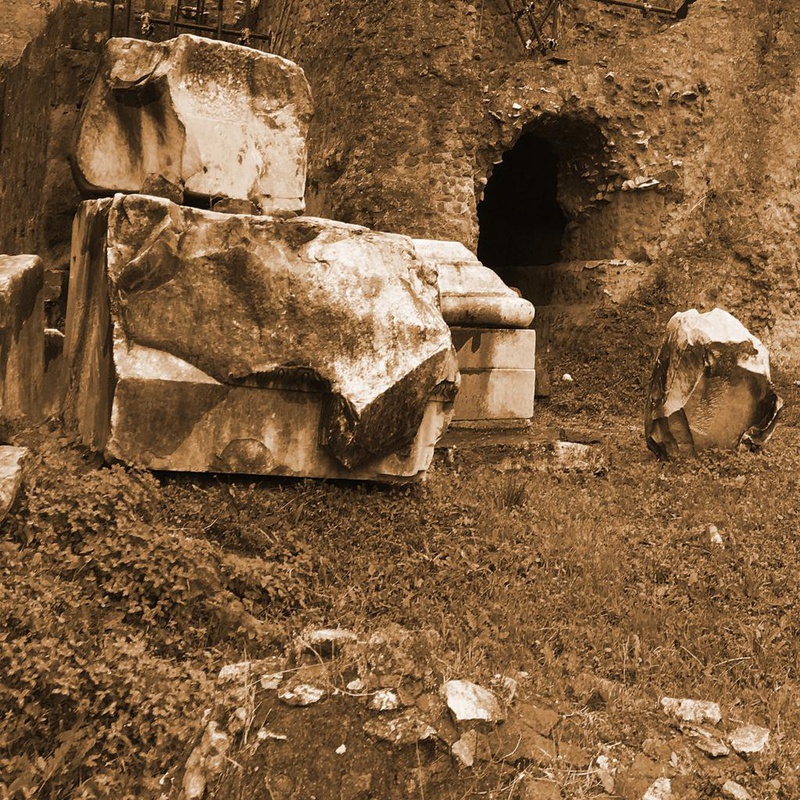Posted by Shazarch on 18 Mar 2021
Temple of Concord
Fourth century BCE - First century CE, Rome
Archaeological site
In ancient Rome, the major temple dedicated to the goddess Concordia was on the slopes of the Capitoline Hill at the end of the Sacra Via, near the main seats of government (the Curia, Comitium and Rostra) and the Gemonian Stairs, which led from near the prison to the Arx. The temple overlooked the Forum and was aligned with the axis linking the Forum and the Capitoline Hill. Its visibility was maintained in time and accentuated by changes, until construction of the Arch of Septimius Severus. The history of this temple, deposited in the few remains, includes a controversial date of foundation in 367 BC by Furius Camillus, as recorded by Plutarch and Ovid. It includes a building dedicated to the goddess Concordia in 121 BC by Lucius Opimius and that rebuilt by Tiberius and consecrated in 10 AD. However, the space was not dedicated solely to worship of a civic divinity. It was invested with different symbolic and political meanings in relation to historical events and the balance of power. Camillus founded the Temple of Concord to celebrate reconciliation between the nobility and the people after the unrest caused by approval of the Leges Liciniae Sestiae that opened the office of consul to plebeians. After the uprising that led to the death of Gaius Graccus and massacre of his followers, Opimius created a monumental temple ratified by the Senate, celebrating the apparent resolution of a conflict between the two factions, which was actually resolved in favour of the aristocrats. Various sittings of the Senate took place in the Temple of Concord and it is here that Cicero made his speech against Catilina, urging conviction of the Catilinarian conspirators in defence of the Republic. Concordia, symbol of the victory of the aristocracy in the late republican period, subsequently became a metaphor for harmony in the imperial house. It lost its civic character limited to Rome, becoming Concordia Augusta, i.e. extending to the whole empire. The temple rebuilt by the future emperor Tiberius, designated heir to Augustus in 4 AD, was inspired by this new idea. It was built with the profits of war 'in his and his brother Drusus's name', as recorded by Suetonius. In the words of Ovid, the goddess Concordia could 'cast her gaze over the people of Rome' from the resplendent temple in snowy white marble. The temple was also a museum with important Greek statues, paintings and precious objects listed by Pliny the Elder in his Naturalis historia. The goddess Concordia, possibly influenced by the Greek homonoia, representing the unanimity or oneness of mind uniting the princeps and his entourage, ensured a general balance. The three figures at the apex of the pediment, represented on a series of coins by Tiberius (34-37 AD), suggest that through the family of the princeps, Concordia (together with Salus and Pax) guided government of the city and empire. Today we have the ruins of the Temple of Concord, rebuilt by Tiberius. Beside them is what remains of the Temple of Vespasian, in front of the basement of the Tabularium. The existing parts, belonging to the podium and the threshold of the cella, enclose certain pre-existing structures. Compared to the temple of Opimius, characterised by an elongated cella and probably by eight frontal columns that continued along the sides, the temple of Tiberius differs in form and image: it is wider, exploiting the available space and partly occupying the area of the Basilica Opimia, which was built together with the previous temple and demolished to create this bigger monumental building. The unusual plan is therefore partly due to land conformation. The cella lies transverse to the pronaos and is relatively elongated. On the lateral anterior walls, as shown in some coins of the period, there are two windows which let light into the building to illuminate the internal decorations and objects. The back of the temple, towards the Tabularium and the slopes of the Capitoline Hill, is completely closed. A wide flight of steps leads up to the pronaos with six Corinthian columns on the facade. Literary sources and drawings also refer to the statues of the temple: figures, differently interpreted, that accompany Concordia and express the complexity of meaning and symbols associated with this building.
